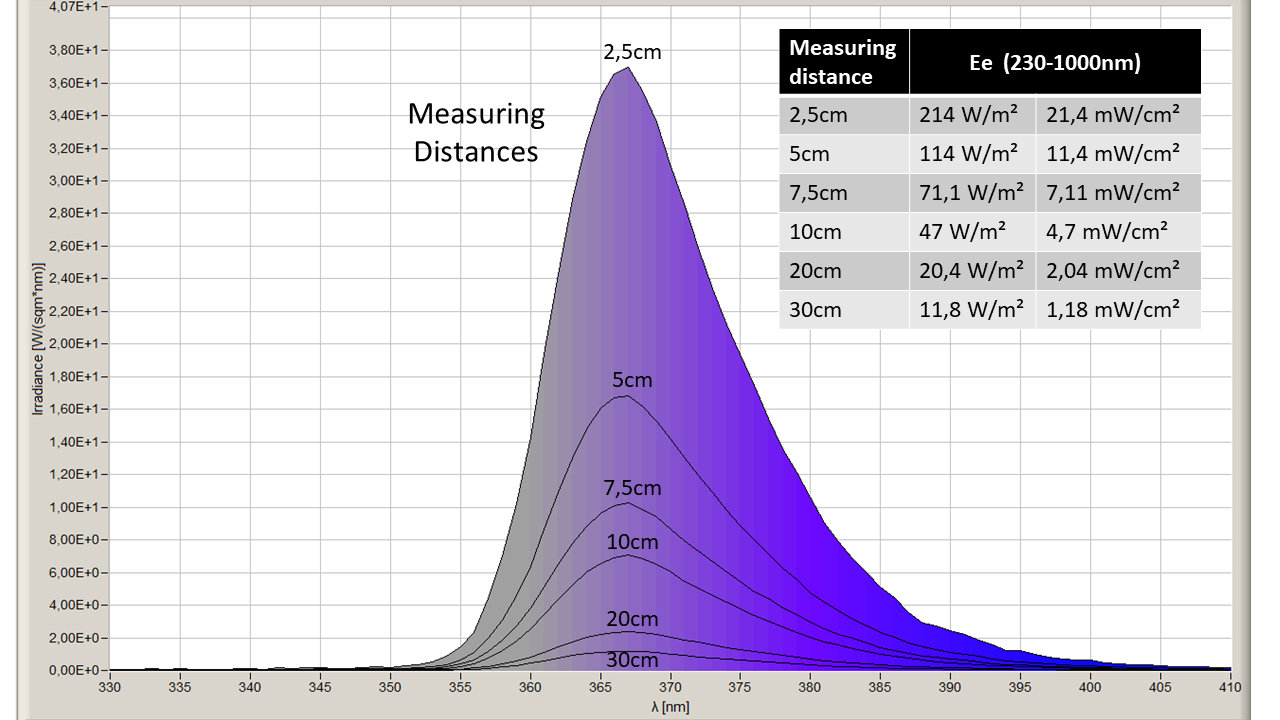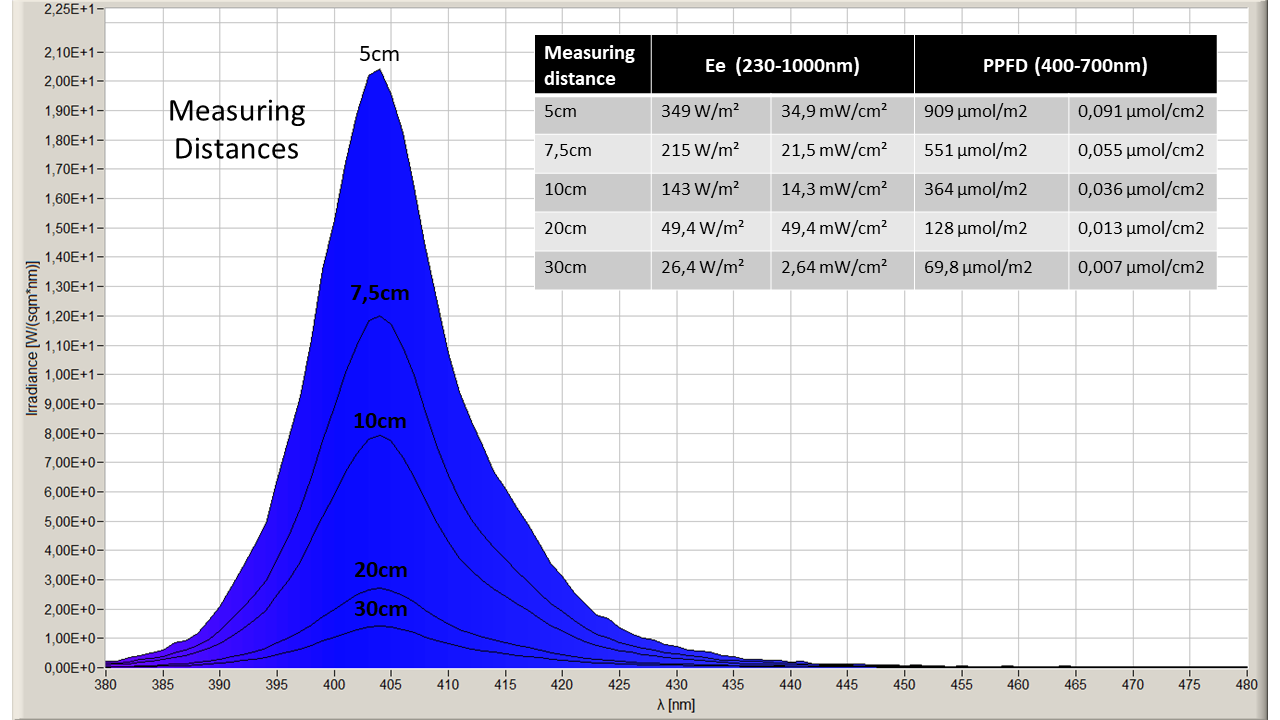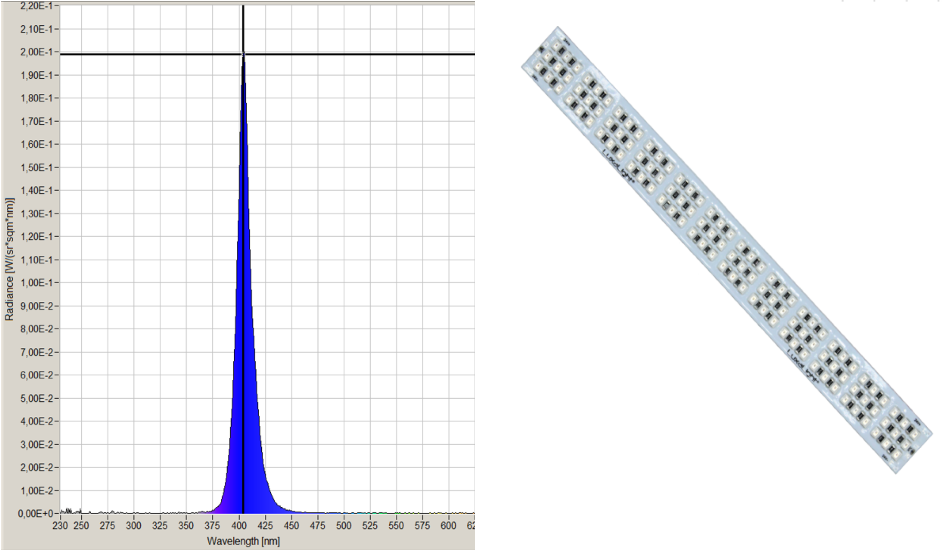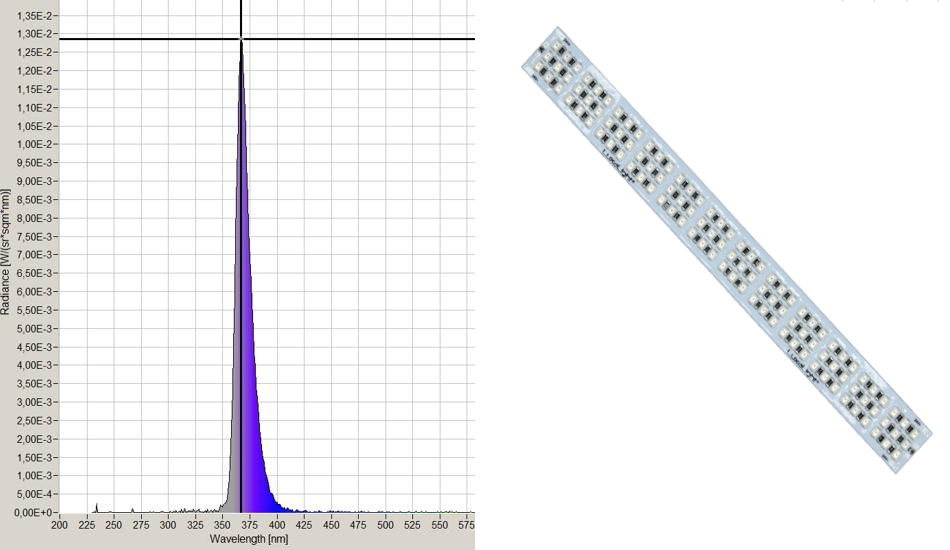Wavelengths
LED engines can be designed with an UV wavelength, such as 365nm (UV-A), 395nm (UV-A) and 300nm (UV-B). Specifications such as wavelength peak, beam angle, radiance (W/m²), etc. must be taken into account when designing.
Triggering
Triggers can be easily and flexibly configured using the MaNima Configurator, MaNima Cloud and UDP commands. The MaNima Pollux Industry has a wide range of inputs and outputs, such as digital contacts, Ethernet, Industrial Network Protocols.
PCB design
A good PCB design is necessary to be able to integrate the LED engine into an existing installation or into a new machine, but also for a long lifespan of the LED engine.
Heat management
With large capacities it is necessary to keep the heat management optimal, LED engines need to be equipped with a heat sink or active cooling.
IP and IK value
How impact-resistant and waterproof a LED housing should be depends on the application. The PCB coating or the casting of the LED engine determines the IP and IK value. A very high impact resistance (IK10) and watertightness (IP68) can only be achieved by LED moulding.
Real-time monitoring
Maximum efficiency can be achieved with real-time temperature monitoring of the LED engine.
Quartz glass
The UV LED engine can be equipped with quartz glass. Quartz glass protects the LED engine and ensures uniform UV radiation.
Optics
The radiance can be bundled in a targeted place by means of a lens. The optics are available in various degrees. It is also important to ensure that the surface is irradiated evenly.
Pulse and strobe
Parameters such as pulse width and height, strobe characteristics and triggers can easily be configured with the MaNima Pollux Industry.
NTC
The LuxaLight LED engine is equipped with an NTC that makes it possible to measure the temperature in real time.






